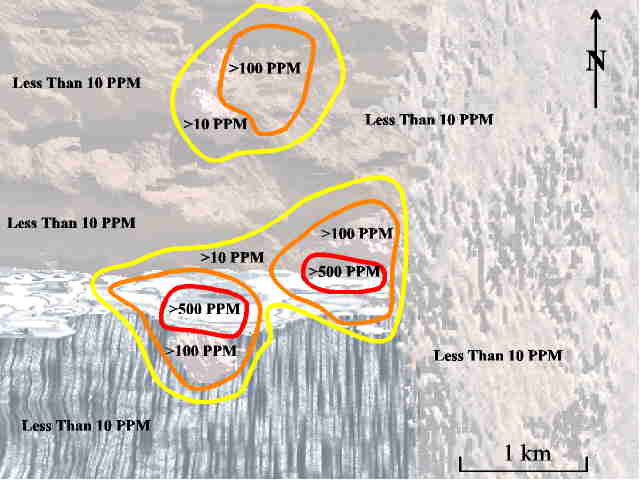
Map of Copper Concentrations of Samples Collected on the Surface of the Exploration Area

This map shows the results of a geochemical survey done by a team of geochemists (geologists who study the Earth by collecting and analyzing the chemistry of rocks). The map was derived by collecting rock samples from the surface, grinding them into a fine powder, and sending them to a commercial geochemical laboratory to determine how much copper each sample contains. The results are reported in parts per million, abbreviated as "PPM". For reference, 10,000 PPM is 1%, and 1,000 PPM is 0.1%. Typical copper ore is several thousand PPM ( 0.1 to 0.8 %), but copper contents of surface rocks, even those over the top of a copper deposit, generally contain less than 1,000 PPM because copper is easily dissolved away by rainwater. This map reflects only what is exposed at the surface. The rocks may contain more or less copper at depth. A gravel or other rock type that was deposited over the top of a copper deposit, burying it, may not be rich in copper, even though the deposit may be only a short depth below the surface. A layer that is away from a granite porphyry at the surface may not contain much copper, but may be more copper rich at depth where it is intersected by the granite porphyry. Likewise, a layer may be very copper rich at the surface, but may not contain much copper at depth.